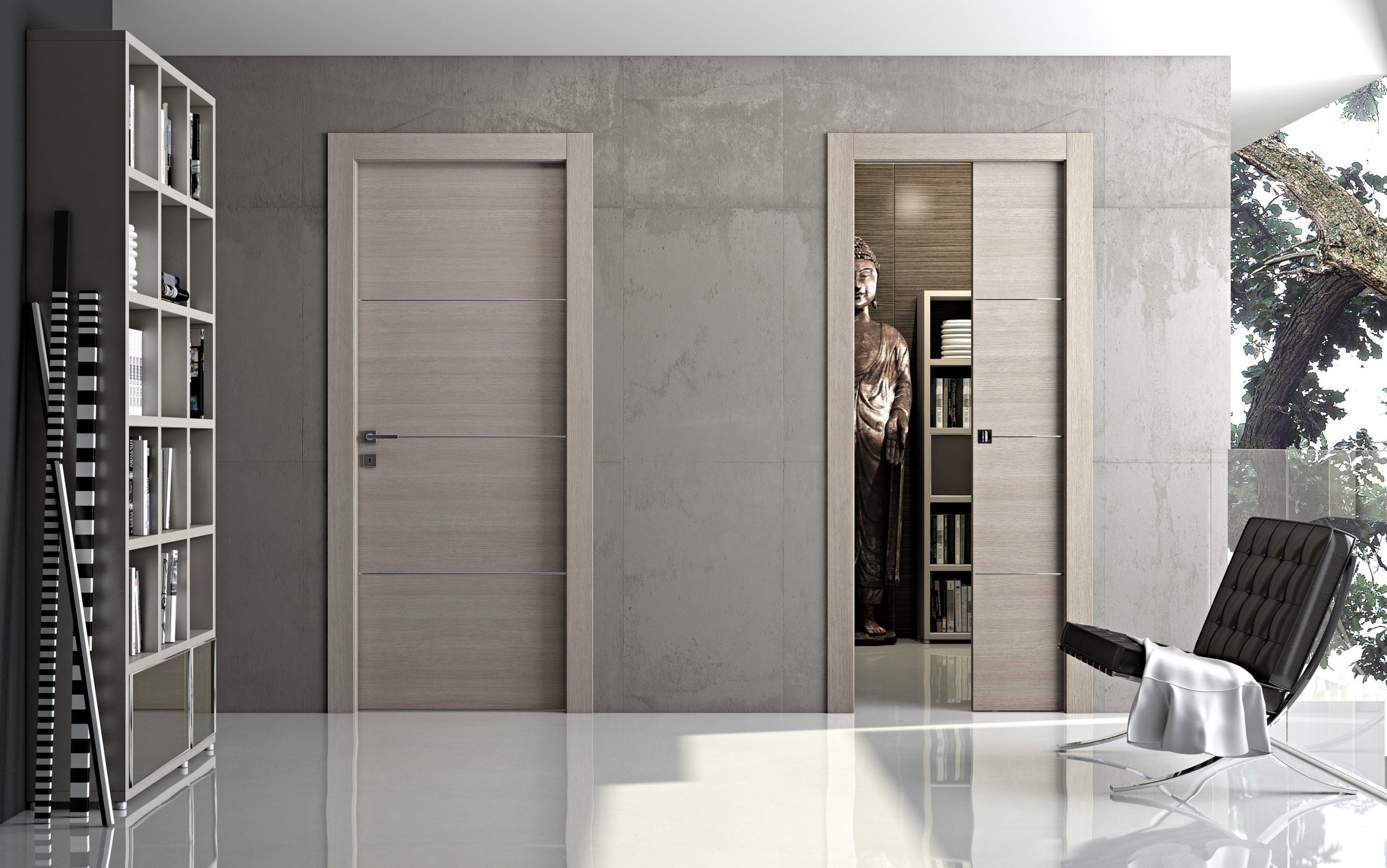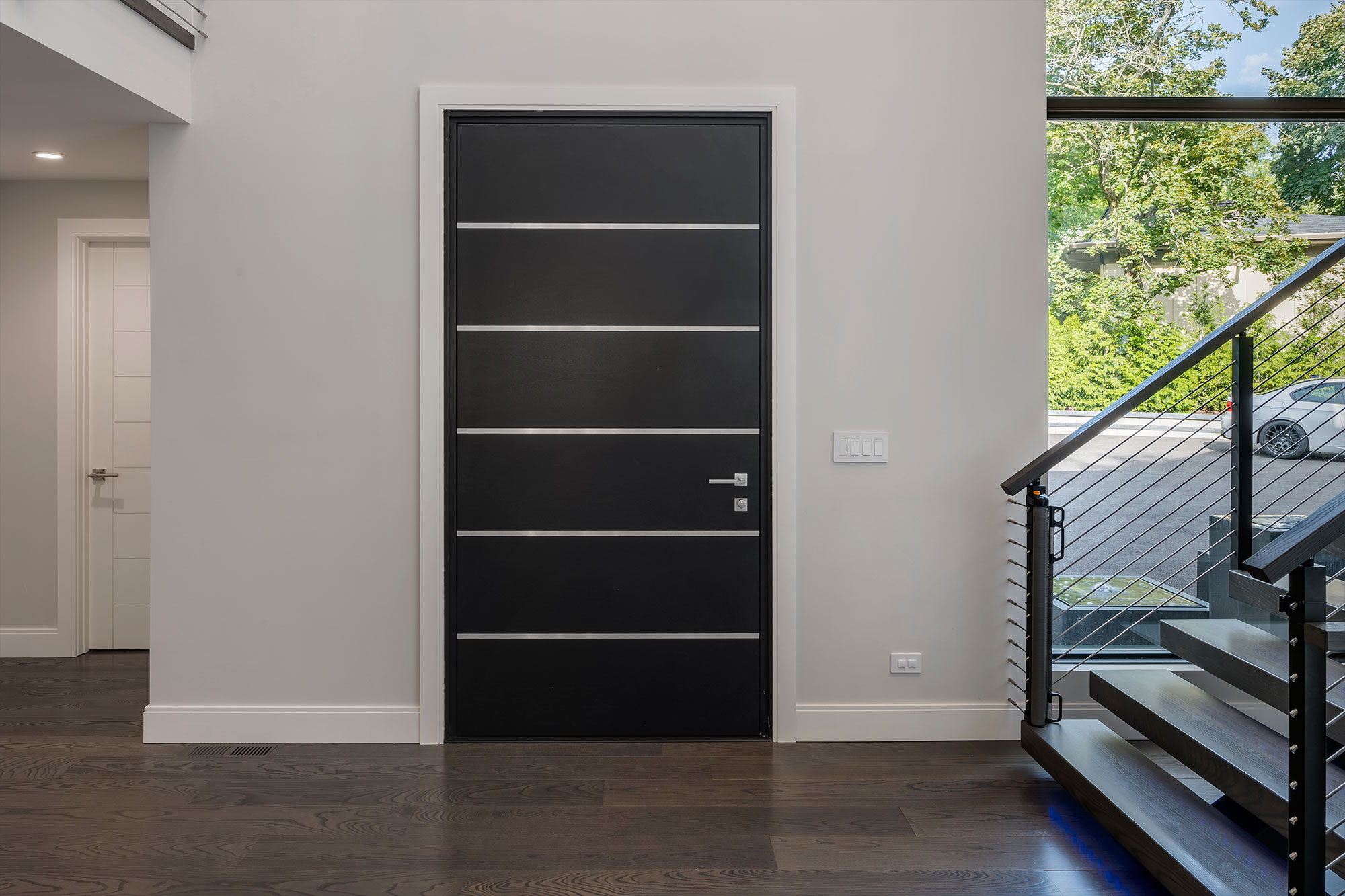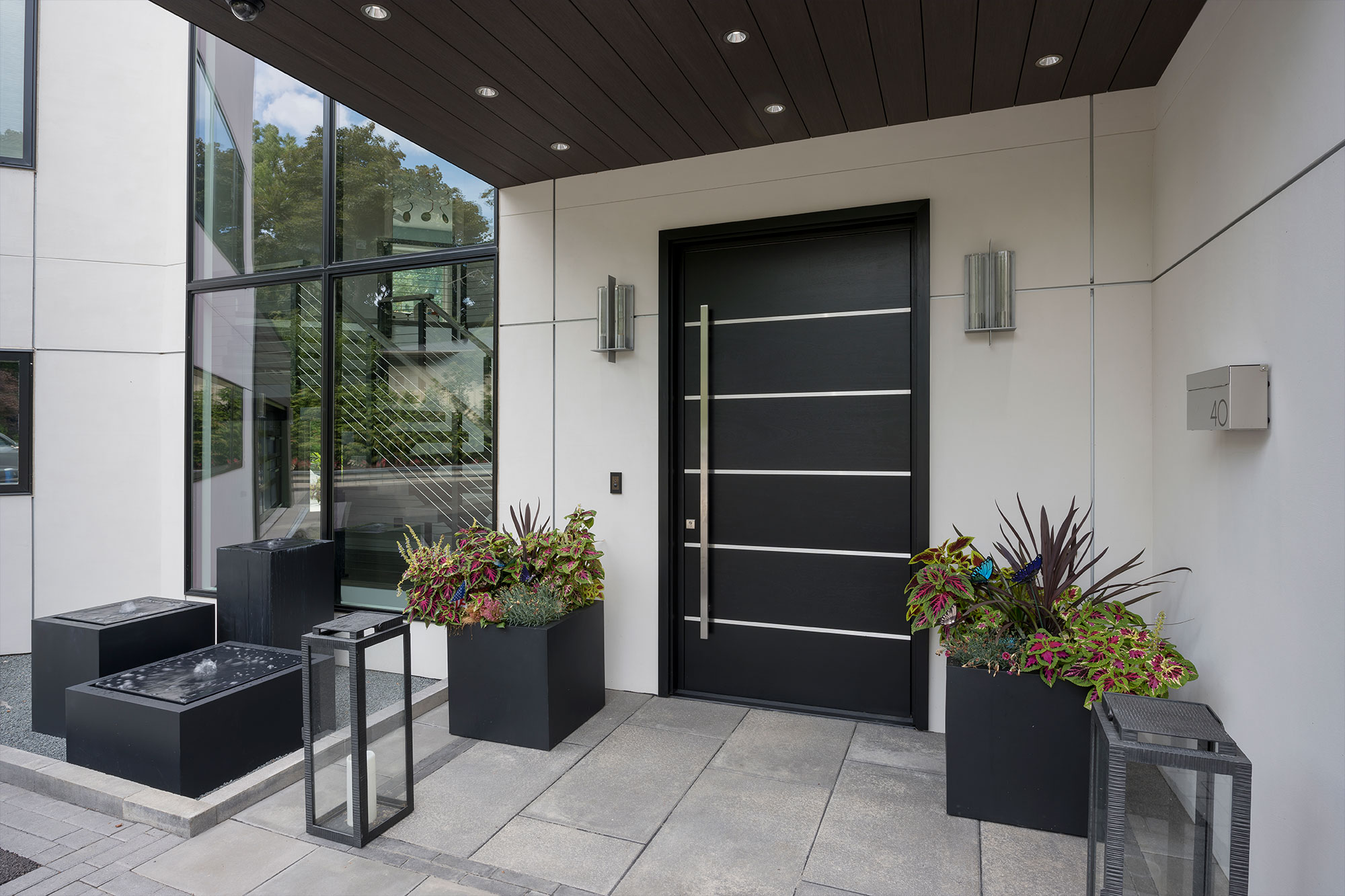What is the lifespan of an outside door?
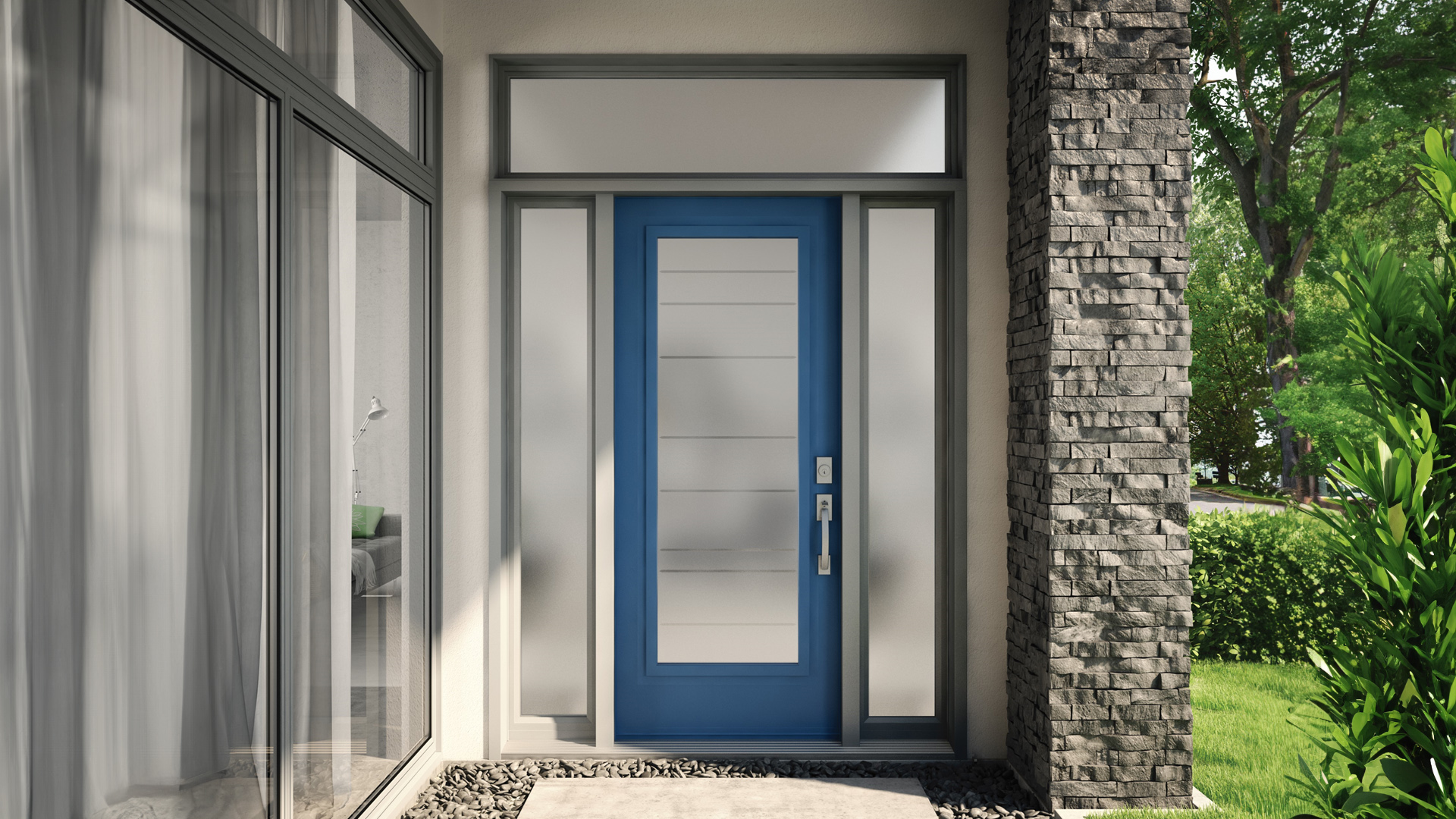
Understanding the Average Lifespan of an Outside Door
What “Lifespan” Really Means for Doors?
When people talk about the lifespan of an outside door, they’re really asking one thing: how long before it starts to look old or stops doing its job? In simple words, the lifespan is the time your door stays strong, safe, and nice to look at before it needs major repairs or replacement.
Unlike indoor doors, outside doors face constant exposure — rain, sun, wind, dust, and temperature changes. Every season tests their strength. Over time, paint fades, seals loosen, and materials expand or shrink. That’s why even a good-quality exterior door eventually wears down.
Still, a long-lasting outside door isn’t just about how old it gets. It’s about how well it performs through the years — keeping your home warm, secure, and stylish. Some homeowners replace their doors for beauty, others for better insulation or security. So, lifespan is both a practical and personal measure.
The Average Years by Door Type
The material your door is made from is the biggest factor in how long it lasts. Let’s break it down simply:
Wood Outside Doors:
Beautiful and classic, but high maintenance. On average, they last 15 to 30 years when well cared for. Without proper sealing or painting, rain and sun can shorten that lifespan quickly.
Steel Outside Doors:
Strong and affordable, steel doors usually last around 20 to 30 years. They’re less affected by weather but can rust if scratches go untreated. A little maintenance — like repainting and keeping the edges sealed — helps them last longer.
Fiberglass Outside Doors:
These are the real champions of durability. They resist moisture, sun, and even minor impacts. Many fiberglass doors last 30 to 50 years or more with minimal care, making them one of the best choices for homeowners who prefer low upkeep.
Aluminum or Composite Doors:
Lightweight yet solid, aluminum and composite doors have a lifespan of about 25 to 40 years, depending on the climate. They don’t rot or rust easily and are ideal for coastal or humid areas.
Factors That Affect Durability
Even the toughest outside door can’t escape time, but some factors decide how fast it ages:
1. Climate and Sun Exposure
Constant sun can fade paint and make materials expand. Doors facing west or south often wear out faster because of UV exposure. Moisture, snow, or salty air also cause damage — especially to wood and metal surfaces.
2. Maintenance Routine
Cleaning, repainting, and sealing your front door every few years keeps it in shape. Regular care prevents small cracks or leaks from turning into big problems. Think of maintenance as your door’s sunscreen — it keeps the surface healthy and protected.
3. Material Quality
Cheap materials mean shorter lifespans. High-quality wood, steel with protective coating, or fiberglass reinforced cores last much longer. It’s often worth spending a little more at the start to avoid early replacement costs.
4. Usage and Impact
A main outside door used every day will age faster than a side or back door. Constant opening and closing wear down hinges, seals, and paint.
5. Installation Quality
Proper fitting and sealing prevent drafts, leaks, and warping. Even a premium door won’t last long if installed poorly. Always make sure professionals align and weatherproof it correctly.
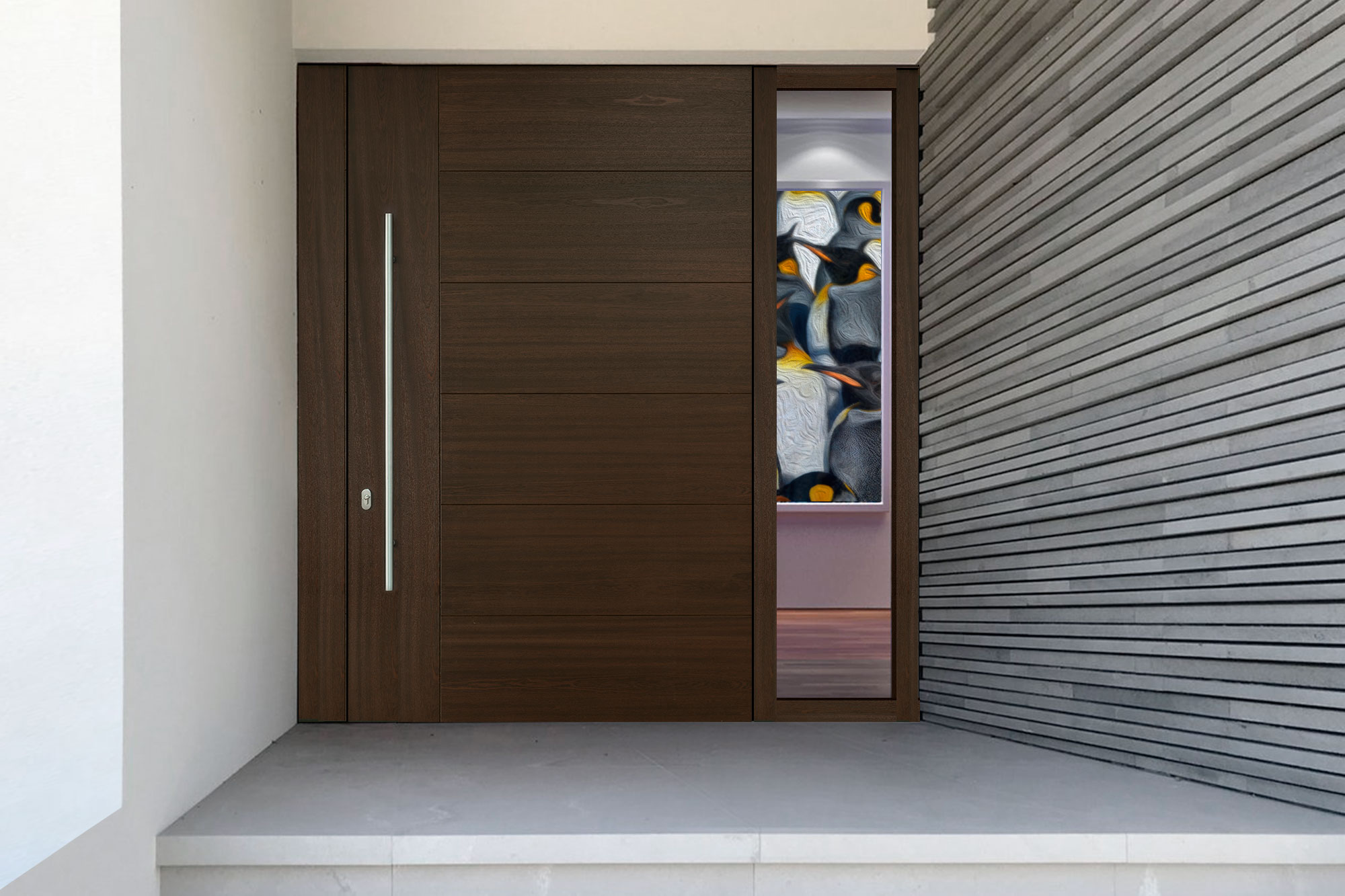
Lifespan by Material Type
Wood Outside Doors
There’s something timeless about a wood outside door. It gives a home that natural, warm, and classic look that no other material can fully copy. But with beauty comes responsibility — wood needs love and care. Its lifespan depends almost entirely on how you treat it and where you live.
Typical Lifespan and Care Tips
A well-built and properly maintained wood exterior door can last anywhere between 15 and 30 years, sometimes even longer. However, without care, that number can drop fast. Sunlight, rain, and humidity are tough on wood — especially if your outside door faces direct weather exposure.
Here’s what makes the difference:
- Keep the surface clean and dry.
- Wipe dust or moisture before it settles.
- Reseal or repaint it every few years.
Some homeowners even install a storm door in front of their main wood door to reduce weather damage — a small trick that adds years to its life.
Common Issues: Warping, Rot, and Termites
Warping happens when one side of the door gets more moisture or heat than the other. The wood bends or twists, and suddenly, the door doesn’t close right. It’s common in hot, humid areas or homes with poor ventilation near the entrance.
Rot is a slower, sneaky problem. When water seeps into the wood — through cracks, old paint, or worn seals — it begins to break down the fibers. You might see soft spots or discoloration near the bottom of the door or around the edges.
And then there are termites. These tiny destroyers can turn a beautiful solid-wood door into a hollow mess. If you live in an area with termite activity, it’s smart to check your outside doors regularly for small holes or sawdust near the base.
How to Extend Its Life with Sealants and Regular Painting?
If there’s one secret to making a wood outside door last decades, it’s sealing and painting. A good sealant locks out moisture and keeps the natural oils inside the wood, preventing cracks and rot. You can use a clear outdoor varnish if you want to keep the natural wood grain visible, or a high-quality exterior paint for stronger UV protection.
A simple rule:
- Repaint or reseal your outside door every 2–3 years.
- Always sand lightly before applying a new coat.
- Pay special attention to the bottom edge — it’s where most water damage starts.
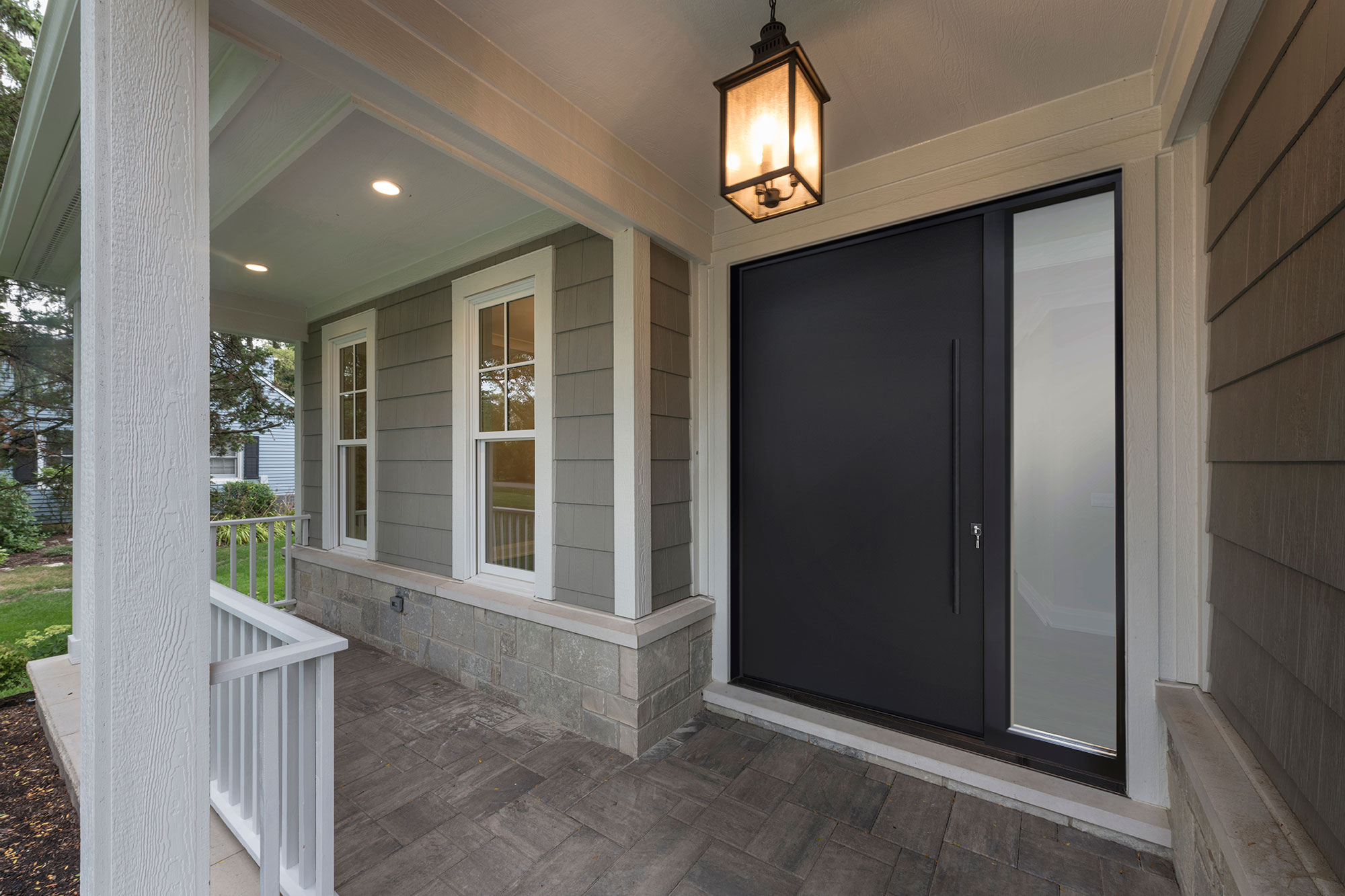
Steel Outside Doors
Lifespan Expectancy and Best Climate Use
A steel outside door is one of the toughest options you can choose for your home. On average, a high-quality steel outside door can last 25 to 40 years when properly cared for. Its solid structure makes it highly resistant to cracking, warping, and swelling — problems that often affect wood doors.
Steel doors perform best in mild or dry climates. In areas with high humidity, constant rain, or salty ocean air, steel may need extra care to prevent corrosion. Homeowners in coastal regions, for example, often apply protective coatings or choose galvanized steel doors with a baked-on enamel finish. These coatings help the Steel Outside Door resist rust and extend its lifespan significantly.
Another reason many people love Steel Outside Doors is their energy efficiency. Most are built with insulated cores, which help maintain indoor temperature and reduce energy bills. They’re also great for security — difficult to break and ideal for entryways that need extra protection.
Dealing With Rust And Dents
Steel is strong, but it isn’t invincible. Rust and dents are the two main enemies of a Steel Outside Door. Moisture and scratches can expose the metal underneath the paint, leading to small rust spots that can spread if ignored.
To deal with rust, clean the area with a wire brush and apply a rust-inhibiting primer before repainting. It’s a quick fix that can add years to your door’s life. For small dents, use an auto body filler — the same kind used for car repairs. Once sanded and repainted, the door looks as good as new.
A simple habit like washing your Steel Outside Door twice a year with mild soap and water can also prevent dirt and salt buildup, both of which speed up corrosion. Touch up any chipped paint right away, and you’ll avoid deeper problems later.
Fiberglass Outside Doors
Average Lifespan
A Fiberglass Outside Door is known as the long-lasting champion among all door types. With good care, a quality fiberglass outside door can easily last more than 20 to 30 years. Unlike wood, it doesn’t warp, rot, or crack, and unlike steel, it won’t rust or dent. This makes it one of the most durable and reliable options for homeowners who want a door that stays beautiful for decades.
The secret behind its lifespan lies in its composite structure. Most fiberglass doors have a solid foam core for insulation and a reinforced fiberglass skin that resists harsh weather. This makes them ideal for all climates — from humid coastal towns to dry desert regions. Even with direct sunlight or freezing winters, a fiberglass outside door keeps its shape and color better than most materials.
To make it last even longer, you can apply a UV-protective finish every few years. This helps prevent fading and keeps the door’s color rich and fresh. A little routine cleaning with soap and water is all it takes to maintain its new look for decades.
Why It’s The Top Choice For Low Maintenance Homes?
For busy homeowners, a Fiberglass Outside Door is a dream come true. It offers the elegant look of wood without all the upkeep. There’s no need for constant sanding, sealing, or repainting. Once installed, it keeps its shine and strength with very little effort.
Fiberglass doors are also energy-efficient, thanks to their insulated cores that block heat and cold. That means lower energy bills and a more comfortable home year-round. They also offer excellent sound insulation, making them great for houses near busy streets.
Another reason many homeowners choose fiberglass is its resistance to wear and tear. Even after years of use, it rarely shows scratches or dents. Families with kids or pets love this feature — it’s a door that truly stands up to real life.
Aluminum And Composite Doors
Longevity And Resistance To Weather
When it comes to strength and durability, Aluminum Outside Doors and Composite Outside Doors both perform impressively well. A high-quality aluminum outside door can last 30 years or more, while composite doors often exceed 35 years with minimal care. These materials were designed to handle what nature throws at them — rain, sun, snow, or coastal humidity.
Aluminum doors are especially loved for their weather resistance. The material doesn’t rust, and its powder-coated surface protects it from UV rays and salt air. That’s why aluminum outside doors are a smart pick for homes in coastal or rainy regions. Even after years of exposure, they rarely fade or corrode.
Composite outside doors, on the other hand, combine several materials — usually wood fibers, PVC, and resins — to create a strong, stable structure. This mix gives them the appearance of natural wood but with far greater resistance to moisture, warping, and cracking. They stay solid in both humid and dry climates, making them one of the most low-maintenance Outside Door choices available today.
Maintenance And Cleaning Advice
One of the biggest perks of choosing Aluminum or Composite Outside Doors is the easy upkeep. These doors don’t need regular painting or staining like wood. A little care once in a while keeps them in great shape for decades.
For aluminum doors, cleaning is simple: just use mild soap and warm water. Avoid harsh cleaners, as they can damage the protective coating. Wipe the surface with a soft cloth, and you’ll restore its shine in minutes. For stubborn marks, a gentle sponge usually does the trick.
Composite outside doors need even less effort. Because the material resists dirt and fading, a quick wash twice a year is enough. You can also apply a bit of silicone spray to the hinges to keep them quiet and smooth.
Regular checks are also wise. Look for any loose weatherstripping or seals, and replace them if necessary. Keeping the seals tight not only protects against moisture but also improves energy efficiency — an underrated benefit of a well-maintained Outside Door.
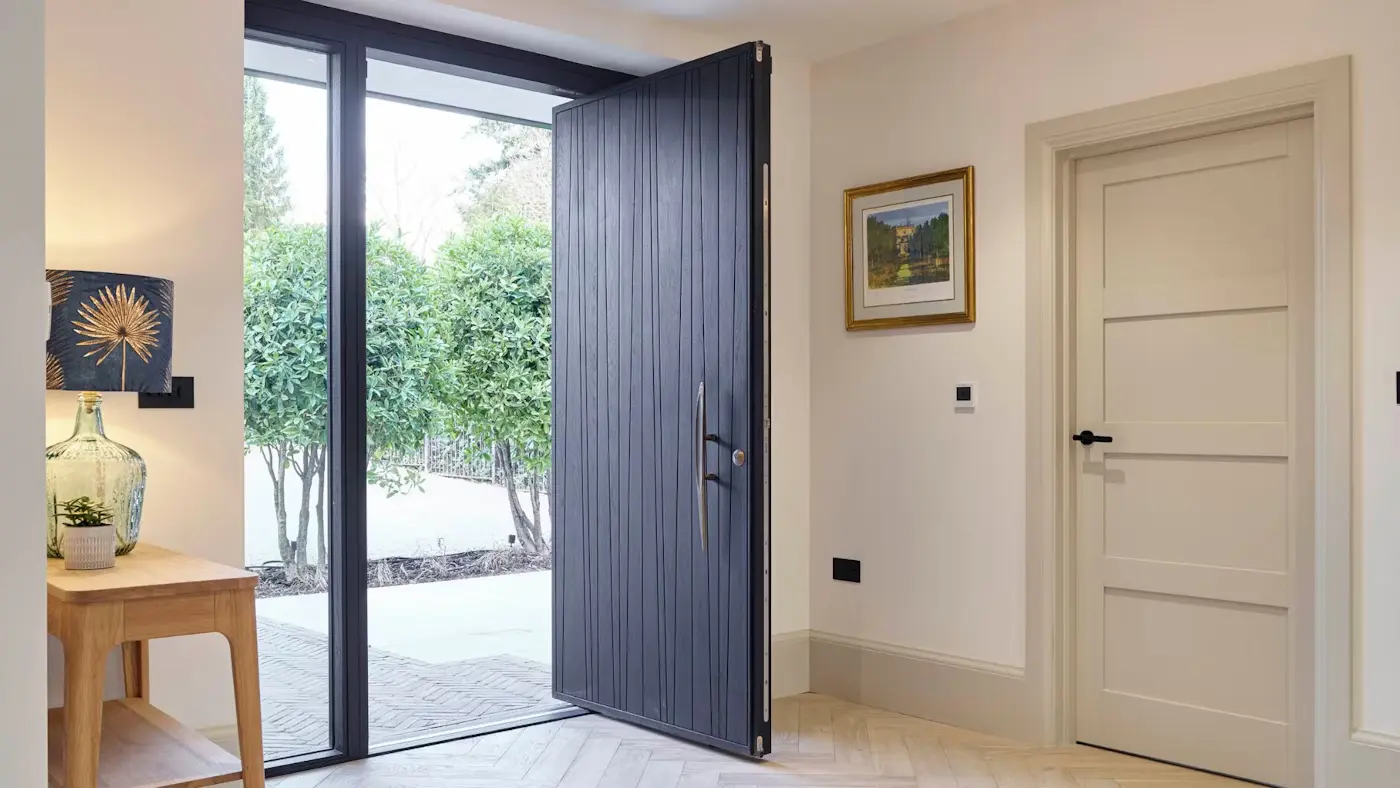
How Climate Impacts Door Lifespan?
In Coastal Areas (Salt And Humidity Problems)
If you live near the ocean, your Outside Door has to fight against two tough enemies — salt and humidity. The salty air can slowly eat away at metal doors, leading to rust and corrosion. Even wood outside doors struggle, as the constant moisture causes them to swell, warp, or rot over time.
The best way to deal with this environment is to choose a Fiberglass Outside Door or a galvanized steel door with a high-quality protective coating. Both materials can handle the salty breeze far better than untreated wood or basic metal. It also helps to rinse your outside door with fresh water every few months to remove salt buildup, and always keep the paint or finish in good condition.
In Cold Climates (Freezing And Expanding Wood)
Cold winters bring their own set of challenges. When temperatures drop, wood outside doors tend to shrink and expand, especially when moisture seeps in and then freezes. Over time, this can cause cracks in the finish or even small gaps around the frame that let in cold air.
A smart choice for these regions is a Steel Outside Door or Composite Outside Door, both of which resist warping and maintain their seal in low temperatures. Adding weatherstripping and insulated cores also helps keep your home warm and energy-efficient.
To extend the lifespan of your outside door in cold climates, apply a protective sealant before winter and make sure the frame stays dry. Even a little ice buildup near the hinges can cause long-term issues if ignored.
In Sunny Regions (UV And Paint Fading)
If your home basks in sunlight most of the year, UV rays can be just as damaging as humidity or cold. Constant exposure fades paint, weakens finishes, and can make wood or fiberglass surfaces brittle over time. A bright and sunny location might look nice, but it can cut years off your Outside Door’s lifespan if it’s not properly protected.
To prevent this, look for UV-resistant finishes or factory-baked coatings that hold their color longer. Fiberglass outside doors are especially great in sunny regions because they don’t absorb heat like metal and won’t warp like wood. You can also install a small awning or porch cover to shield the door from direct sunlight. A little shade goes a long way in keeping your door fresh and vibrant.
How To Choose The Right Material For Your Local Weather
Every region has its own challenges, so the key is to match your Outside Door material to your local climate. If you live near the sea, fiberglass or coated steel doors are your best friends. In cold or snowy regions, insulated steel or composite doors keep your home warm and sturdy. For dry, sunny areas, fiberglass wins again for its UV resistance and stability.
Before buying, always check if the door has weather-rated insulation or factory finishes made for your region’s conditions. Spending a little more on the right material can easily double your door’s lifespan.
What Signs Indicate Your Outside Door Needs Replacement?
Your outside door does more than open and close. It protects your home, keeps energy bills down, and adds to your home’s style. But over time, even the best front doors wear out. Here are the most common signs it might be time to replace yours.
Visible Damage
If your outside door has visible cracks, peeling paint, or gaps around the frame, that’s a clear warning sign. Cracks allow water and air to seep in, which can cause wood rot, rust, or even mold growth. Peeling paint often means the door’s protective coating is gone, leaving it exposed to weather damage.
You might also notice small gaps between the door and the frame. These gaps let in light, insects, and drafts — all things you don’t want. A solid entry door should sit flush in its frame, sealing tightly when closed. If you can see daylight through the edges, the structure is likely warped or swollen, and no amount of weatherstripping will fully fix it.
Drafts and Poor Insulation
Feeling a chill near your front door in winter or noticing hot air creeping in during summer? That’s a sign your outside door insulation has failed. Older doors, especially wooden ones, can warp or shrink with temperature changes. This movement breaks the seal that keeps air where it belongs — outside.
Poor insulation doesn’t just make your home uncomfortable. It also drives up your energy costs since your HVAC system must work harder to maintain the right temperature. A well-sealed exterior door should block outside air completely.
If you notice your curtains moving slightly when the wind blows or you can feel a draft at the bottom or sides, your outside door is likely losing its efficiency. Replacing it with a modern, energy-efficient model can reduce energy waste and make your home cozier year-round.
Difficulty Opening or Closing
If your outside door sticks, scrapes the floor, or feels heavy to open or close, something’s not right. Over time, humidity, temperature shifts, and settling foundations can cause the door frame to shift. Metal doors may rust at the hinges, while wooden doors can swell or warp.
These small issues might start as minor annoyances but can quickly become bigger problems. A sticking door puts strain on the hinges and latch, which could eventually break. It can also make it harder to lock the door securely — a real safety concern.
Try this simple check: open and close your front entry door several times. If you hear creaking, grinding, or notice resistance, it might be time for a replacement. A new, properly fitted outside door will move smoothly and close with a firm, quiet seal.

How to Extend the Lifespan of Your Outside Door?
A high-quality outside door can last for decades, but only if you take care of it.
Simple Maintenance Habits That Make a Difference
Regular Cleaning
Your outside door faces rain, dust, sunlight, and fingerprints every day. Dirt and grime can eat away at paint or finish, especially on wood and metal doors. Cleaning it once a month with mild soap and water helps protect the surface. Avoid harsh chemicals — they can damage coatings and dull the shine. After washing, dry it completely with a soft cloth to prevent moisture buildup.
Seasonal Inspections
Each season brings its own challenges. In winter, cold air and moisture can cause swelling or cracks. In summer, sunlight can fade paint and dry out seals. A quick seasonal check can spot early signs of wear. Look for gaps, rust, peeling paint, or loose screws. Fixing these small issues early helps your outside door last much longer.
Proper Lubrication of Hinges and Locks
Creaking hinges or stiff locks are more than just annoying — they signal friction and metal wear. Use a few drops of oil or silicone spray on hinges, latches, and locks every few months. Smooth movement prevents stress on the frame and keeps your outside entry door closing tightly. A well-lubricated door also stays quieter and feels more solid.
Painting and Sealing Schedules for Each Material
Different outside door materials need different care. A wooden door, for example, should be sealed or repainted every two to three years to protect against moisture, sunlight, and insects. Use weather-resistant paint or a high-quality wood sealant.
Steel and fiberglass doors don’t need as frequent painting, but they still benefit from a touch-up every five to seven years. Repainting prevents rust and maintains the outer layer’s protective barrier. Always clean the surface and lightly sand it before applying a new coat.
No matter the material, sealing the edges — especially the bottom — is essential. This is where rainwater and dirt usually sneak in. A tight seal keeps your outside door from absorbing moisture and warping over time.
Why Professional Installation Matters More Than You Think?
Even the best outside door won’t perform well if installed incorrectly. A professional installer ensures the frame is square, the hinges align perfectly, and the weatherstripping seals properly. A poorly fitted door may not close right, leading to drafts, uneven wear, and water leaks.
Professionals also know how to adjust for wall thickness, flooring level, and insulation gaps. That kind of precision makes your front entry door not only look better but also last longer. In short, good installation is the foundation of a long door life.
Using Door Awnings and Weatherstripping to Reduce Damage
Weather is one of the biggest threats to your outside door lifespan. A simple way to protect it is by adding a door awning. It shields the surface from direct sun, heavy rain, and snow — all of which cause fading, warping, and cracking.
Weatherstripping is another secret weapon. It seals the space between your outside door and the frame, blocking drafts and water leaks. Modern weatherstrips are easy to install and inexpensive, but they make a huge difference. Replace them once a year, especially if you notice light or air coming through the edges.
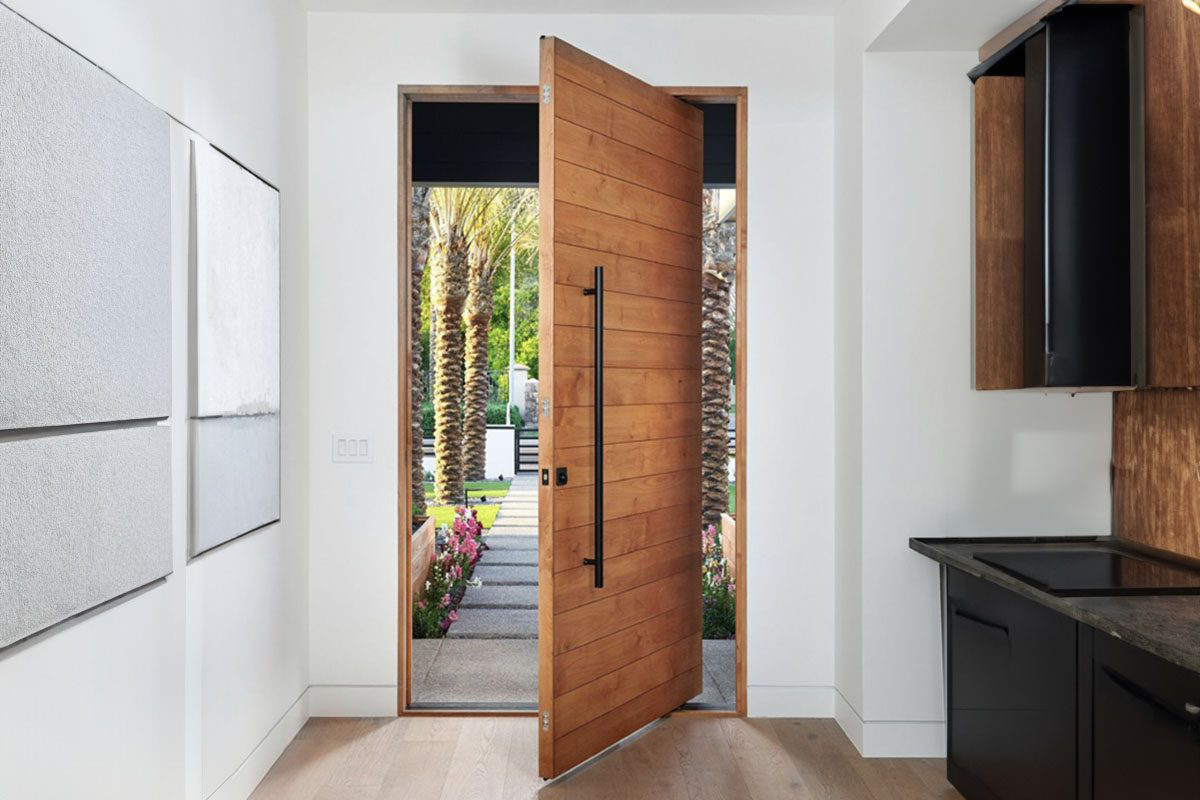
How to Maintain Your Outside Door to Extend Its Lifespan?
Front door plays a major role in your home’s appearance, security, and energy efficiency. With the right care, you can extend its lifespan and keep it functioning properly for years. Regular maintenance can prevent costly repairs and replacements. This section will discuss properly maintaining your front door through regular cleaning, sealing, weatherproofing, and annual inspections.
Regular Cleaning and Care
Cleaning your front door regularly is the simplest way to keep it looking fresh and to prevent damage. Depending on the material of your front door, different cleaning methods may be required. Here’s how to clean and care for your front door based on its material:
Wooden Doors:
Wooden front doors can accumulate dust and dirt over time. Use a soft cloth and a mild soap to wipe down the door. Be sure to dry it thoroughly to prevent water damage. If your door has a finish, you should periodically reapply a protective sealant or varnish to keep it looking its best and protect it from moisture and UV rays.
Steel Doors:
Flat doors are also ideal for private areas like bedrooms and bathrooms. They provide a sleek, elegant look while offering excellent privacy. For bathrooms, solid flat doors are a good choice as they are more durable and provide soundproofing, which helps keep noise from traveling. The simple design also contributes to a calming, peaceful environment, which is perfect for spaces where relaxation is key.
Fiberglass Doors:
Fiberglass doors are low-maintenance but still need attention. Clean them with a soft cloth and non-abrasive cleaner to avoid scratching the surface. Fiberglass doors often come with a wood-like finish, so apply a fiberglass polish to keep the finish intact. This will also help preserve the color and texture of the door.
Seal and Weatherproof Your Front Door
One of the most important aspects of front door maintenance is ensuring it is properly sealed and weatherproofed. Gaps and leaks around the door can lead to higher energy costs and decreased comfort, especially during extreme weather. Here’s how to seal and weatherproof your front door:
Door Sweep:
A door sweep is a simple and effective way to seal the gap at the bottom of your front door. These can be installed easily and help prevent drafts, rain, and pests from entering your home. Check the door sweep every few months and replace it if it is worn out.
Sealant:
If your door has wooden panels, it’s important to reapply sealant to protect it from the elements periodically. This is especially important for areas exposed to moisture. If your door is made of steel or fiberglass, check the seams and edges for gaps, and apply sealant as needed.
Annual Inspections
Performing an annual inspection of your front door is a great way to catch minor issues before they turn into major problems. Here’s what you should check during your inspection:
Check for Warping or Cracking:
Performing an annual inspection of your front door is a great way to catch minor issues before they turn into major problems. Here’s what you should check during your inspection:
Inspect the Hinges and Lock:
Ensure the hinges and lock mechanism are secure and functioning properly. Tighten any loose screws on the hinges, and lubricate the lock and hinges with a silicone-based lubricant to prevent squeaks or stiffness. If the lock is sticking or hard to operate, it might be time to replace the hardware.
Look for Drafts:
Check for any drafts around the door by running your hand along the edges or using a candle to detect air movement. If you feel cold air coming in, it might indicate a gap in the weatherproofing or sealant that needs to be addressed.
Clean and Lubricate Hardware:
Clean the door hardware, such as handles and locks, to prevent dirt buildup. Apply lubricant to the moving parts of the lock and handle to keep them functioning smoothly.

Relate FAQ
How long does an outside door usually last?
Most outside doors last 20 to 30 years, depending on the material, weather exposure, and maintenance. Steel and fiberglass doors often last longer than wood doors, which may need replacement sooner if not properly sealed.
What factors affect the lifespan of an outside door?
If your front door is warped, has large cracks, is challenging to open or close, or is letting in drafts, these are strong indicators that it's time for a replacement. Additionally, a door with poor insulation can increase your energy bills.
How do I know when my outside door needs replacing?
Common signs include cracks, drafts, difficulty opening or closing, and visible rot or rust. If your door no longer seals properly or lets in cold air, it might be time for a replacement.
Does the material really make a difference in door longevity?
Yes. Fiberglass and steel doors are known for their durability and resistance to weather damage. Wood doors are elegant but more vulnerable to moisture, while aluminum or composite doors offer a balance between strength and low maintenance.
Can I extend the life of my outside door?
Absolutely. Clean your door regularly, repaint or reseal it every few years, lubricate the hinges, and install weatherstripping to protect against water and heat damage.
How often should an outside door be repainted or sealed?
Wood doors generally need repainting or sealing every 2–3 years, while fiberglass and steel doors can go 5–10 years between coatings, depending on the exposure to sunlight and rain.
How does climate affect my outside door’s durability?
In humid or coastal areas, moisture and salt can corrode metal doors and warp wooden ones. In cold climates, expansion and contraction can crack paint or joints. Always choose materials suited for your region’s weather.

